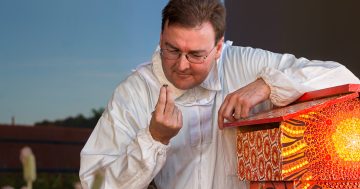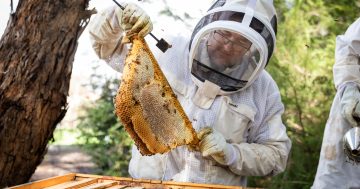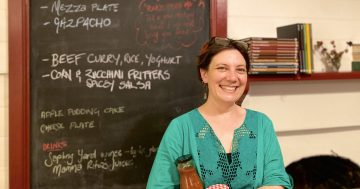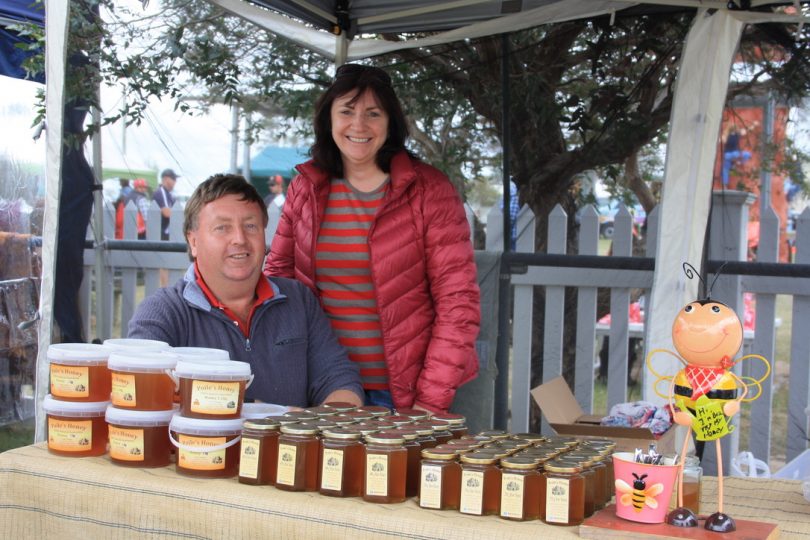
Gary and Felicity Poile, of Collector, reckon there’s only one way to describe the upcoming honey season – sweet. Photo: Supplied.
Only a few things need to fall into place to make life sweeter for Collector’s Gary Poile. Little things like the weather, eucalypt trees, and one of the most unreliable women in the world, Mother Nature.
But Gary is pretty confident she’ll get it right this year – and there’s a buzz about to prove it.
As one of the region’s most experienced beekeepers, Gary is banking on such a season.
The weather’s been good. No-one can complain about the amount of rain we’ve had and, says Gary, we deserve it after the last couple of ordinary seasons.
More specifically, he deserves it – although you’d never hear him say that.
Gary, his wife Felicity, who he describes as the “glue that holds us together”, and their son – third generation beekeeper Brad, lost more than half their hives when the 2019-20 Mogo fire struck.
Of the 100 hives they had down there, the majority were either burned to the ground or were weakened by the blaze – “… and the Queens never recovered”.
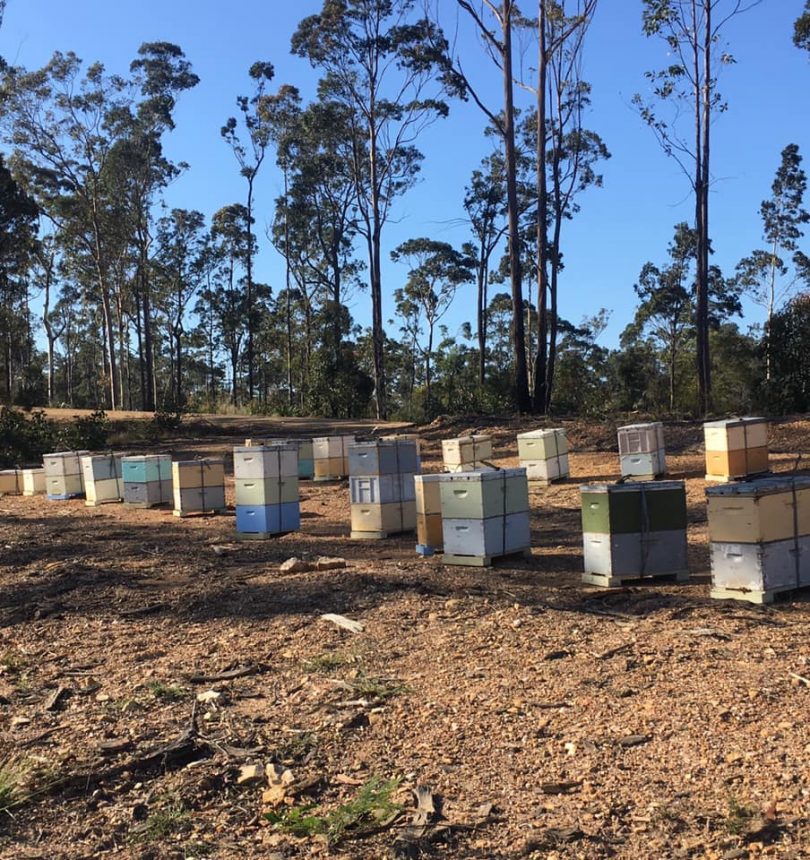
Before: Poile honey hives down at Mogo just before the 2019 New Year’s Eve fires swept through the township. Photo: Gary Poile.
But like all good farmers, if times get tough you just deal with it – and start again.
A second generation beekeeper, Gary said as every honey season approached there were always issues to look at.
When it’s too hot, the bees get knocked around too much and won’t produce a lot of honey and like anyone who works on the land, he chases the rain to produce the best – moving his hives to catch the good falls.
“This season the thing we’ve been waiting for is the eucalypts to bud. The trees have had a good break, the sugar content has been allowed to build up in them so hopefully it will produce some great nectar for the bees.”
Gary’s father George taught him everything he knows and that’s a lot – if his reputation in the industry is any guide. And Gary is passing on that knowledge to his son Brad.
“He’s our star apprentice,” Gary said. “He just doesn’t know yet how many years it will take for him to become a first-year apprentice.”
Gary reckons there’s not a lot wrong with learning from the best – like he did.
“I learned everything from my father. He was self-taught.
“I don’t think there’s much wrong with the way I learned things. I learned a lot of things by getting them wrong. But there’s nothing wrong with that, that’s the way to learn.
“I think the next generation should always go a little further. You have that advice learning from your old man, but you are also open to other advice, the technical stuff, as well.
“If you want to walk the walk, you have to talk the talk. But I do know one thing – it’s in the blood.”
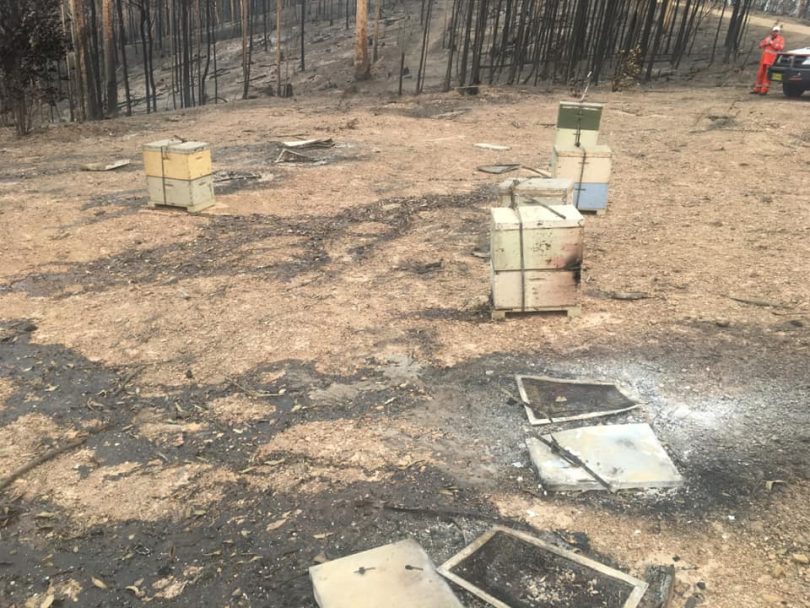
After: All that remained of the Poile family honey hives after the Mogo fires. Photo: Gary Poile.
Today, post-Mogo, the Poiles are doing things just a little differently.
They have about 100 hives at Collector, Temora and Galong and in the past it was simply a matter of collecting as much honey as they could, selling it where they could.
They also ran sheep on the family’s Collector property so there was always a back-up.
Poile’s Honey was great honey, the best they could do, but Gary saw there was a need for change – quality rather than quantity became the key, cutting back on where they were selling it to concentrate on what they were already doing well, better.
“There were a lot of reasons behind this,” Gary said. “Of course COVID-9 hasn’t helped – neither has climate change.
“You’ve got to be able to diversify. You have to have control of the situation, so you can ramp things up if it looks like being a good season or you bunker down when things start to go awry.”
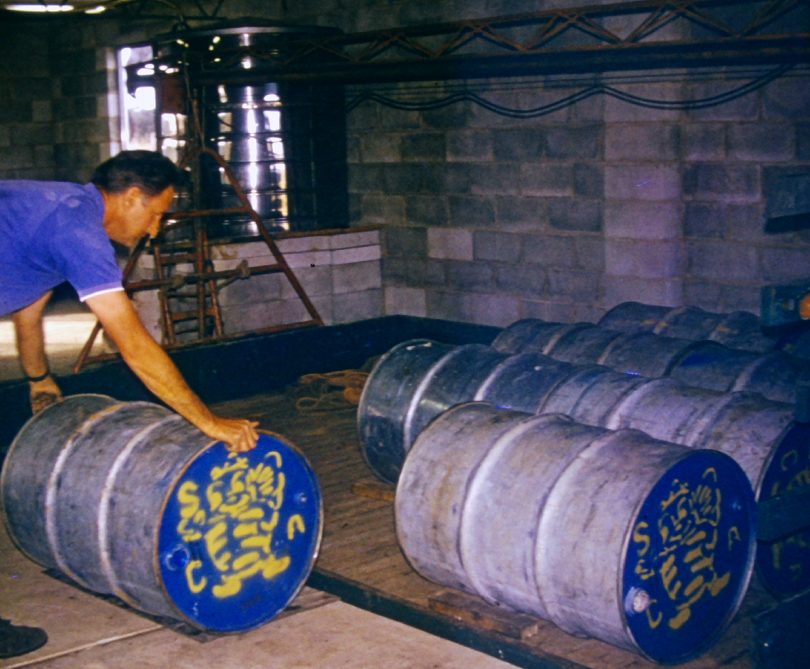
Patriarch George Poile in the family’s “new” honey shed – circa 1973, rolling out the drums for one of the first deliveries to Capilano Honey when it was a co-operative. Photo: Supplied.
And diversify they have. Although he’s had to give a few things away to concentrate on the honey business – like running the Collector Pumpkin Festival.
But he’s since become involved in the Collector Wind Farm, “which fits in nicely with our plans to be more clean and green”.
Then there’s the honour of being Upper Lachlan Shire’s 2019 Citizen of the Year, local controller of the State Emergency Service and captain of the bushfire brigade – you’ll find him behind pretty much everything that goes on in the Collector community.
So back to the sweet stuff. Although it’s the family’s bread and butter, literally, as a diabetic Gary is not really allowed to eat the honey – except of course to test it – regularly. But he’ll still tell you what’s the best.
“Yellowbox,” he says. “Those Tasmanians will try and tell you it’s their leatherwood, but yellowbox is where you get the choice honey. ”
Original Article published by Sally Hopman on About Regional.
